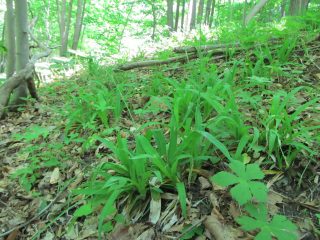
Systematics and Biogeography of the Woodland Sedges Carex section Laxiflorae (Cyperaceae)
Jenna Dorey
Carex section Laxiflorae includes some of the most common and ecologically important sedges in forests of eastern North America. At least 15 species occur in this area, but this number is surely an underestimate, since several species appear to include previously undocumented diversity. Also, one other species occurs in western North America, and eight additional species occur in eastern Asia. Carex section Laxiflorae exemplifies the classic eastern North American-western North American-eastern Asian disjunct pattern of temperate northern hemisphere plants, previously completely unstudied in Cyperaceae.
I am using field work, molecular systematics, herbarium studies, and morphometric analyses to clarify the taxonomy of Carex section Laxiflorae. I am also using these techniques to study the timing and causes for the present-day distribution patterns, in the process testing several competing hypotheses for the disjunctions. This work is important because of the undescribed species that remain in this group of sedges, and the unresolved nature of the classification of this group (both of which are unusual in North American sedges). In addition, this study of the evolution of disjunctions between North America and Asia will be the first one for the Sedge Family.

Woodland understory with Carex laxiflora.